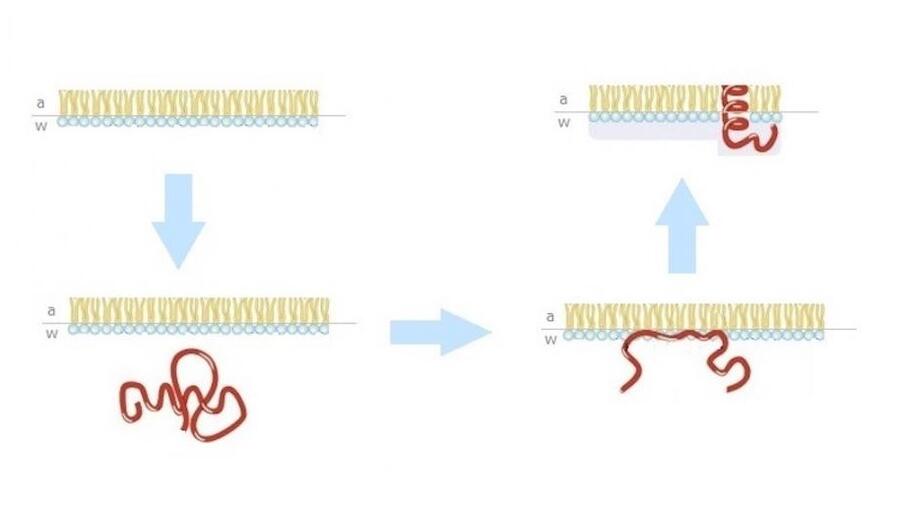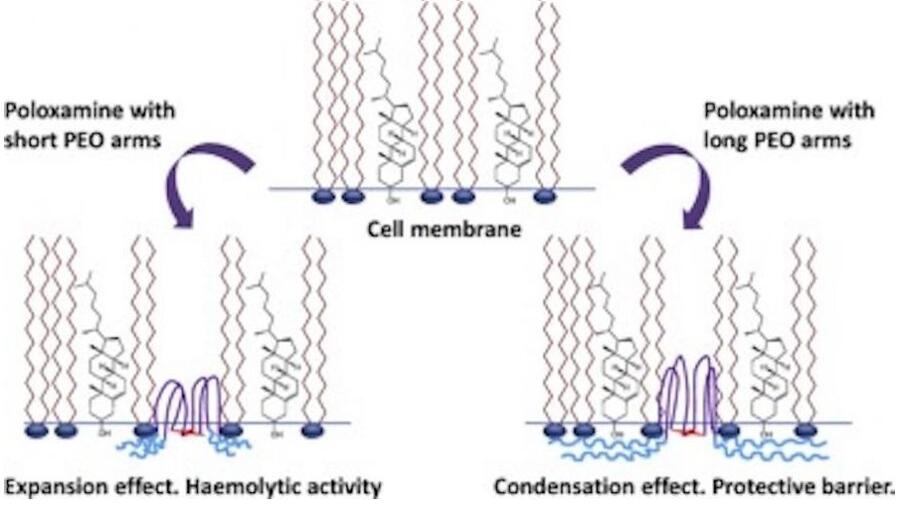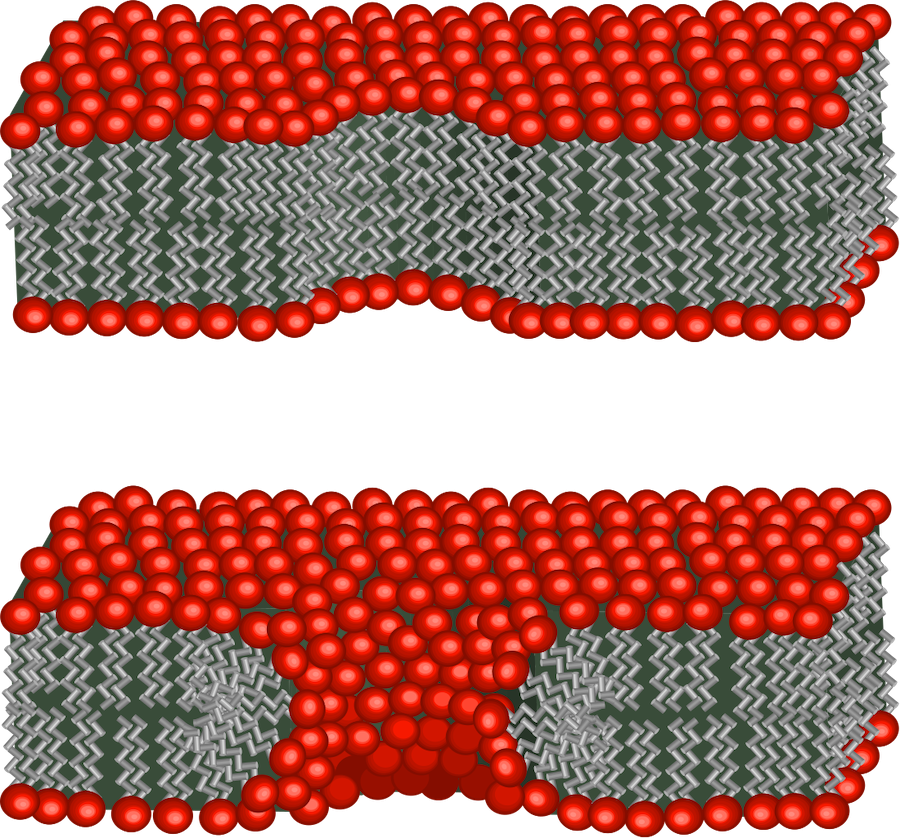Interaction of (bio)polymers with lipid membranes
Interaction of peptides and proteins with membrane components: molecular insights for chemotherapies.

Protein-membrane interactions are often the first step towards cell colonisation and other immune-related cell processes (infection, cancer and others), hence its vital importance in pathogenesis mechanisms research. In this sense, using peptide sequences representative of the behaviour of antigenic proteins simplifies experimental design and outcome interpretation in these studies.
There are also certain peptides (which we can characterise at the air/water interface) whose ability to diffuse across or selectively interact with lipid membranes makes them emerge as good drug candidates with membrane-related mechanisms of action, a dire need in current times to face increasing bacterial resistence to antibiotics. These mechanisms, as well as their potential toxicity, are currently being studied in our lab through peptide interactions with membrane models.
- C. M. Morais et al. / BBA - Biomembranes 1860 (2018) - go to article
- S. Pérez-López et al. / Coll. Surf. B 158 (2017) 278-286 - go to article
- J. Miñones et al. / Langmuir 31 (2015) 10161–10172 - go to article
Polymer-induced membrane structure alterations
Numerous polymers, such as poly(alkylene oxide) block copolymers or poly(ethyleneinime) among others, have proven interactions with biomembranes, which may cause a range of physiological effects depending on polymer structure and properties.
These substances may even have opposite effects based on their structure, which determines their interaction with membranes. Some have shown to weaken colloidal structure, i.e., decrease membrane's cohesion, which may cause membrane lysis (showing a haemolytic effect in erythrocytes) or may open the window to enhanced permeation for the delivery of drugs. In contrast, some others seem to favour a more compact arrangement of membrane lipids, protecting its integrity.

Other polymers are used as components of medical devices such as contact lenses, and must also interact with biointerfaces (tear fluid and corneal epythelium are some examples) in other to diffuse across the relevant physiological barriers. For all these reasons, polymer-membrane interactions are a field of paramount interest for us.
- J. Sabín et al. / Coll. Surf. B: Biointerfaces 210 (2022) 112219 - go to article
- I. Sández-Macho et al. / Coll. Surf. B: Biointerfaces 133 (2015) 270-277 - go to article
Drug-membrane interactions
Mechanisms of action of drugs: the cell membrane as therapeutic target

A large amount of drugs exert their pharmacological action at the cell membrane. In fact, some antibiotics like polymixins, colistin and its derivatives (and daptomycin, but considered as a lipopeptide for our purposes), and antifungals such as nistatin and amphothericin B interact with lipid components of the microorganisms's membrane, causing its rupture or otherwise hindering vital functions as a means to destroy the infectious agent. Similarly, other drugs have their therapeutic site of action inside the cell, requiring to diffuse across the membrane, which happens through intimate interactions between the two.
We study these interactions using physicochemical methods, i.e., monitoring variations in magnitudes of thermodynamic, mechanic, electric, etc. nature which respond to changes in molecular interaction forces in the membrane. This allows us to elucidate these mechanisms of action in order to gain a better understanding of the pharmacology of the active ingredient. Thsis can also facilitate the search for structural analogues with improved features.
- M. Jurak et al. / BBA - Biomembranes 1858 (2016) 1821-1832 - go to article
Membrane affinity studies: drug absorption. Molecular biopharmacy and pharmacokinetics
Drug molecules undergo several processes of diffusion across lipid membranes as part of the journey towards their pharmacological target in many administration routes. In these transport processes, affinity of the drug for microenvironments of different polarity is decisive for its efficiency (both thermodynamic and kinetic).
For this reason, interactions between drugs and biomembrane components provide valuable information on the systemic absorption of a certain chemical entity, which can be used in drug design, in biopharmaceutical studies made to evaluate drug candidates (regarding permeability and solubility), and also to establish relations between biophysical behaviour and pharmacokinetics.
- E. V. Lage et al. / Chemico-Biological Interactions 289 (2018) 75-80 - go to article
Drug delivery mechanisms: interactions with carriers and permeation enhancers
Biomembrane interactions of new surfactants

Drug carriers often makes physical contact with the target tissue as a previous step for delivery of the active ingredient and further cell uptake. Therefore, studying the interaction of said delivery system with membrane models are of great interest in order to assess its quality as carrier of bioactive molecules.
Similarly, substances administered along with the active ingredient may also play a role in cell membrane interactions, changing its permeability and other biophysical properties of consecuence to the therapeutic action.